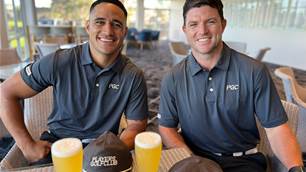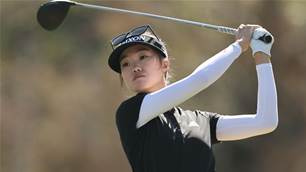As the NRL continues its search for a buyer of the Titans, Inside Sport recently took a look at where it has gone wrong for Gold Coast-based teams of all codes over the years …
September 1982: The eyes of the sporting world – the Commonwealth countries at least – are on QEII Stadium. Close to 1600 athletes from 45 nations have converged on the Queensland capital of Brisbane to compete in 141 events across 12 sports in the latest instalment of the Commonwealth Games.
Every Games has a mascot, and this year it’s Matilda, who television sports caller Norman May crowns “Australia’s First Lady” during Opening Ceremony commentary. Matilda, a six-tonne, 13m-high kangaroo (actually a heavy-duty industrial forklift truck) enters the arena, Along The Road To Gundagai screeching out of the stadium’s sketchy speakers.
Trojan horse-like, and with a “pouch” filled with children dressed as joeys, she begins a lap of the QEII running track. Every time she winks, swishing her seductively long eyelashes, each of the 62,000 in attendance thinks it’s all for them … and only them.

Matilda and Brisbane, indeed Queensland, were well and truly put on the world map back in 1982. The host nation would go on to win 39 gold medals at that year’s Commonwealth Games, one more than Mother England. The stage, then, for sporting growth across the neighbouring regions was built. And sure enough, on the back of those Games came Queensland’s successful staging of Expo ’88, and the establishment of rugby league powerhouse, the Brisbane Broncos.
You’d have thought at least some of that sporting love and mass goodwill would have found its way 80km down the highway and into the neighbouring Gold Coast in the ensuing years, but it hasn’t. In fact, since the late ’80s, Australia’s sunshine strip has proven a virtual graveyard for club teams competing in national sporting competitions. So what’s happened between Matilda’s lap of legend and now?
No matter the sport, the GC has welcomed them aboard in club/franchise form, before throwing them over: the Giants, Seagulls, Gladiators and Chargers in rugby league, the Rollers, Cougars and Blaze of the NBL, Clive Palmer’s Gold Coast FC on the soccer field, and Australian Rugby Championship outfit the East Coast Aces. All have folded within a few years of establishment despite being hopeful of the support of one of the fastest growing populations in Australia.
This horrific trail of club destruction makes next year’s Commonwealth Games on the Gold Coast an interesting proposition. As you read this, the host city is sprucing up to welcome thousands of athletes, officials and visitors and a worldwide television audience of more than 1.5 billion for what will be the biggest event in Australia this decade.
Inside Sport recently took up an invite by Tourism and Events Queensland to be part of an “Energy and Adrenalin”-themed famil. We were among the first media to experience the Games’ early buzz. On first-hand inspection, and subsequent research of the footy landscape of the late 1980s, it seems it wasn’t necessarily the area’s fault that all those teams keeled over. For many of them, it was the way they went about trying to extract too much from the Gold Coast in too short a time that secured their demise.
As respected historians David Middleton and Ian Heads wrote in their 2008 book A Centenary Of Rugby League, the emergence of the Gold Coast as the final piece in the NSWRL’s 16-team jigsaw came more as a result of league’s desire to avoid an unwieldy 15-club set-up than any local push for inclusion.

The “Internationals Consortium” was one of three unsuccessful bidders for the proposed Brisbane team (eventually the Broncos). They quickly transferred their energies to a Gold Coast bid and won the approval of the NSWRL in May of 1987.
In 1989, former internationals Peter Gallagher, Bob Hagan and John Sattler relinquished control of the Giants, with the license handed over to the prosperous Seagulls Leagues Club.
In 1995, the ARL refused to upgrade a rescue package for the embattled club. Across the 1995-96 off-season, the league took back the GC license it had given to local entrepreneur Jeff Muller, due to several high-level staffers quitting on account of not being able to work with the so-called eccentric manager, who had rebranded the club as the “Gladiators” (by the start of the ’96 season, the league had rebranded the club again, this time to the Chargers).
Boardroom in-fighting, political agendas and an almost annual procession of departing administrators, coaching staff and players greatly affected the club’s stability, with the Gold Coast team officially disbanded in December 1998.
Playing out of Tweed Heads in NSW due to a clause in the Broncos’ license stating that only one team could be based in South-East Queensland, the Giants-Seagulls struggled to gain traction with the Queensland half of the Gold Coast.
The 2018 Commonwealth Games will be staged at a very interesting time for footy on the GC. As the NRL continues its search for a buyer of the Titans, which, just like their predecessors, went belly-up and had to be saved by the league, the Gold Coast Suns’ struggle for recognition and traction on the holiday strip continues as well. The 2010 AFL expansion team drew just 12,710 fans against their neighbours the Brisbane Lions on the opening weekend of the 2017 AFL season.

Despite the fact two footy teams already call the Gold Coast home, there will be plenty of room for the Comm Games on the Gold Coast. People there are doers and outdoor people when it comes to their recreational time.
That first lady of Australia of 1982, Matilda, these days spends her time greeting holidaying families and truck drivers at a servo near Gympie, along Queensland’s Bruce Highway. Perhaps the Titans and Suns could use her wink on game days if times get really tough, especially as the Games hit the Gold Coast inside a year from now …
NOTE: The above article is built on extracts from a feature story which appeared in Inside Sport (May 2017) titled Graveyard To Golden.
Related Articles

19 Holes With ... Chad Townsend and Val Holmes

Playing From The Tips Ep.102: NZ PGA, Arnold Palmer, LIV Hong Kong, Blue Bay & cancelled WPGA













